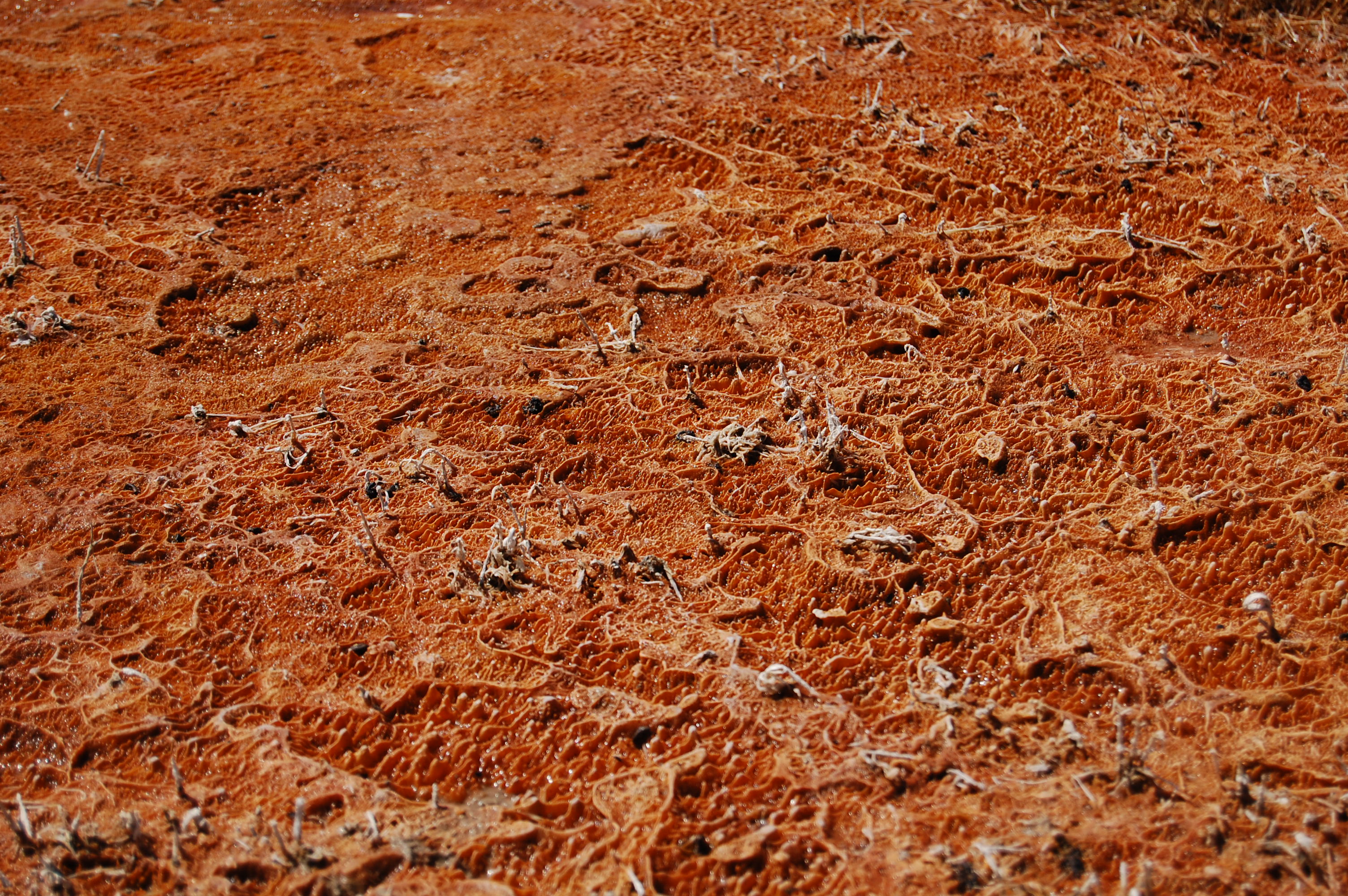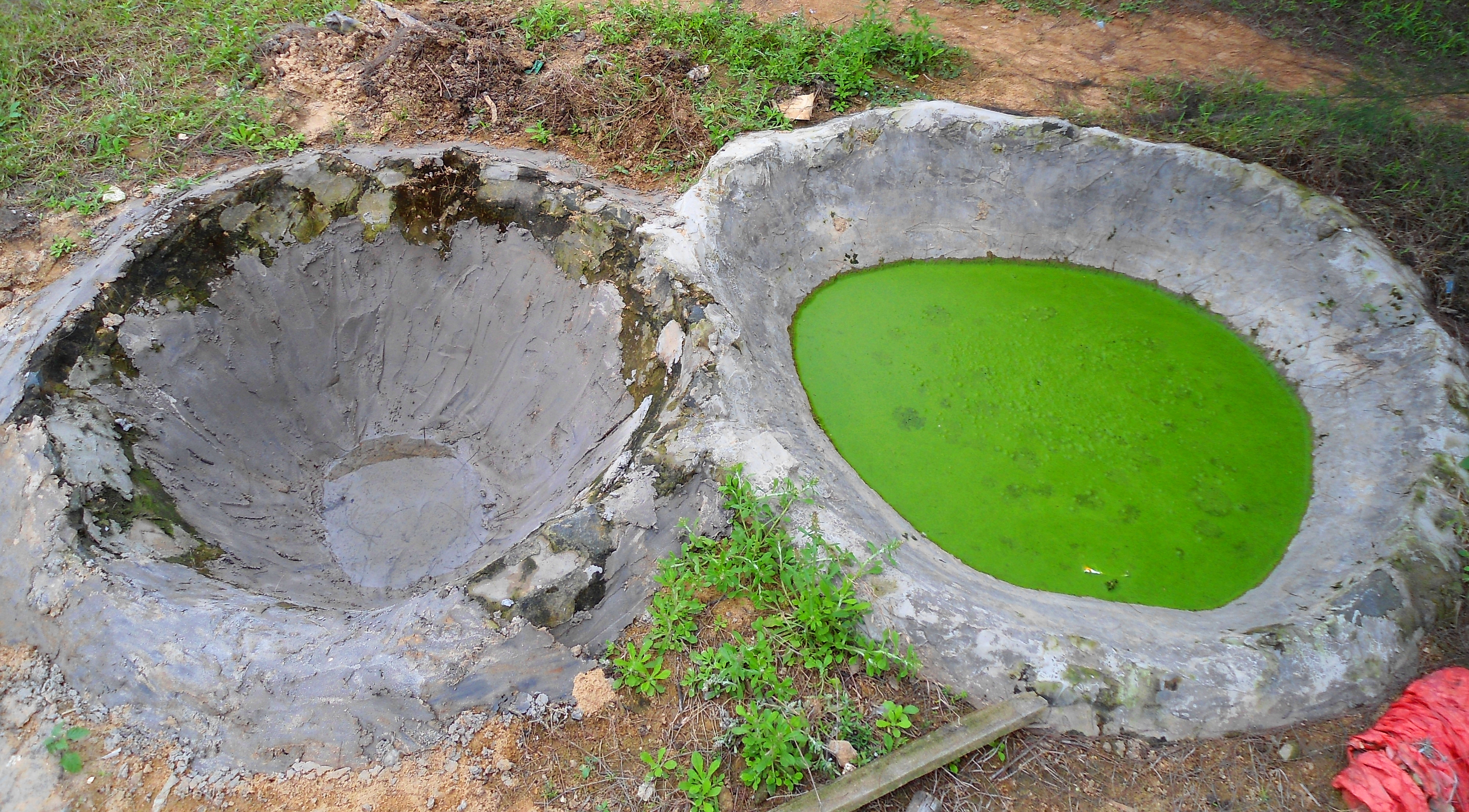|
Coprothermobacter Proteolyticus
''Coprothermobacter proteolyticus'', formerly ''Thermobacteroides proteolyticus'', is a thermophilic, non-spore-forming bacteria. ''Coprothermobacter proteolyticus'' was originally isolated from a thermophilic digester that was fermenting tannery wastes and cattle manure. These bacteria are rod-shaped and stain Gram-negative Gram-negative bacteria are bacteria that do not retain the crystal violet stain used in the Gram staining method of bacterial differentiation. They are characterized by their cell envelopes, which are composed of a thin peptidoglycan cell wa ..., although the cell structure is Gram-positive. The growth range is 35 to 75 °C and pH 5.5 to 8.5, with the optimum growth conditions of 63 °C at pH 7.5. The species uses sugars poorly unless yeast extract and either rumen fluid or Tripticase peptone are available.Bernard M. Ollivier, Robert A. Mah, Thomas J. Ferguson, David R. Boone, J.L. Garcia, and Ralph Robinson. Emendation of the Genus ''Thermobacteroides ... [...More Info...] [...Related Items...] OR: [Wikipedia] [Google] [Baidu] |
LPSN
List of Prokaryotic names with Standing in Nomenclature (LPSN) is an online database that maintains information on the naming and taxonomy of prokaryotes, following the taxonomy requirements and rulings of the International Code of Nomenclature of Prokaryotes. The database was curated from 1997 to June 2013 by Jean P. Euzéby. From July 2013 to January 2020, LPSN was curated by Aidan C. Parte. In February 2020, a new version of LPSN was published as a service of the Leibniz Institute DSMZ, thereby also integrating the Prokaryotic Nomenclature Up-to-date service. References External links List of Prokaryotic names with Standing in Nomenclature [...More Info...] [...Related Items...] OR: [Wikipedia] [Google] [Baidu] |
Thermophilic
A thermophile is an organism—a type of extremophile—that thrives at relatively high temperatures, between . Many thermophiles are archaea, though they can be bacteria or fungi. Thermophilic eubacteria are suggested to have been among the earliest bacteria. Thermophiles are found in various geothermally heated regions of the Earth, such as hot springs like those in Yellowstone National Park (see image) and deep sea hydrothermal vents, as well as decaying plant matter, such as peat bogs and compost. Thermophiles can survive at high temperatures, whereas other bacteria or archaea would be damaged and sometimes killed if exposed to the same temperatures. The enzymes in thermophiles function at high temperatures. Some of these enzymes are used in molecular biology, for example the ''Taq'' polymerase used in PCR. "Thermophile" is derived from the el, θερμότητα (''thermotita''), meaning heat, and el, φίλια (''philia''), love. Classification Thermophiles can be ... [...More Info...] [...Related Items...] OR: [Wikipedia] [Google] [Baidu] |
Endospore
An endospore is a dormant, tough, and non-reproductive structure produced by some bacteria in the phylum Bacillota. The name "endospore" is suggestive of a spore or seed-like form (''endo'' means 'within'), but it is not a true spore (i.e., not an offspring). It is a stripped-down, dormant form to which the bacterium can reduce itself. Endospore formation is usually triggered by a lack of nutrients, and usually occurs in gram-positive bacteria. In endospore formation, the bacterium divides within its cell wall, and one side then engulfs the other. Endospores enable bacteria to lie dormant for extended periods, even centuries. There are many reports of spores remaining viable over 10,000 years, and revival of spores millions of years old has been claimed. There is one report of viable spores of '' Bacillus marismortui'' in salt crystals approximately 250 million years old. When the environment becomes more favorable, the endospore can reactivate itself into a vegetative state. Mo ... [...More Info...] [...Related Items...] OR: [Wikipedia] [Google] [Baidu] |
Thermophilic Digester
A thermophilic digester or thermophilic biodigester is a kind of biodigester that operates in temperatures above 50 °C (122 °F) producing biogas. It has some advantages: it does not need agitation and is faster in fermentation than a mesophilic digester. In fact, it can be as much as six to ten times faster than a normal biodigester. The problem is that for use in this biodigester, the source must enter at high temperature. Vinasse is produced at more than 70 °C (158 °F) and can be used in this kind of biodigester. For each unit of volume of ethanol, about eight units of vinasse are produced. In Brazil, this kind of biodigester is used to process vinasse as a cheap source of methane. References Anaerobic digester types {{renewable-energy-stub ... [...More Info...] [...Related Items...] OR: [Wikipedia] [Google] [Baidu] |
Manure
Manure is organic matter that is used as organic fertilizer in agriculture. Most manure consists of animal feces; other sources include compost and green manure. Manures contribute to the fertility of soil by adding organic matter and nutrients, such as nitrogen, that are utilised by bacteria, fungi and other organisms in the soil. Higher organisms then feed on the fungi and bacteria in a chain of life that comprises the soil food web. History According to a Byzantine tradition attributed to Cassianus Bassus pig dung was generally not usable as fertilizer, except for almond trees. Similar views recorded by Columella were unrelated to the Islamic taboos of later centuries, though the medieval Andalusian writer Ibn Bassal and some later writers from Yemen also recorded negative effects of pig dung "burning" plants. Ibn Bassal described a sort of mixed manure with straw or sweeping mixed in as ', implying that was not composed of only manure. The sweepings from hot bath ... [...More Info...] [...Related Items...] OR: [Wikipedia] [Google] [Baidu] |
Gram-stain
In microbiology and bacteriology, Gram stain (Gram staining or Gram's method), is a method of staining used to classify bacterial species into two large groups: gram-positive bacteria and gram-negative bacteria. The name comes from the Danish bacteriologist Hans Christian Gram, who developed the technique in 1884. Gram staining differentiates bacteria by the chemical and physical properties of their cell walls. Gram-positive cells have a thick layer of peptidoglycan in the cell wall that retains the primary stain, crystal violet. Gram-negative cells have a thinner peptidoglycan layer that allows the crystal violet to wash out on addition of ethanol. They are stained pink or red by the counterstain, commonly safranin or fuchsine. Lugol's iodine solution is always added after addition of crystal violet to strengthen the bonds of the stain with the cell membrane. Gram staining is almost always the first step in the preliminary identification of a bacterial organism. While Gra ... [...More Info...] [...Related Items...] OR: [Wikipedia] [Google] [Baidu] |
Coprothermobacter
''Coprothermobacter'' is a genus of rod-shaped microorganisms, belonging to the new bacterial family ''Coprothermobacteraceae'' of the new phylum ''Coprothermobacterota''. This taxonomic genus has been reclassified in 2018, after different phylogenetic studies showed that these bacteria represented a deeply branched taxon of the domain ''Bacteria''; consequently, the clade including this genus has been classified in a separate phylum from ''Firmicutes'', the phylum where it was included before reclassification. According to the first description of this genus, the etymology of its name derives from Greek words "''kopros''", meaning dung, from the source where one of the species (''Coprothermobacter proteolyticus'') was isolated, and "''thermos''", meaning hot, warm, because of the relatively high temperatures at which these bacteria are able to grow, which can be as high as 75°C. Actually, very few known bacterial species are included in this genus, which are characterized by s ... [...More Info...] [...Related Items...] OR: [Wikipedia] [Google] [Baidu] |
Coprothermobacterota
''Coprothermobacterota'' is a phylum of nonmotile, rod-shaped bacteria. Its members are strictly anaerobic and thermophilic, growing at optimal temperatures between 55 °C and 70 °C. The name of this phylum is based on an early genus, dubbed "'' Coprothermobacter''", a term whose etymology derives from the Greek words "''kopros''", meaning manure, and "''thermos''", warm, referring to the fact that these bacteria are capable of living at relatively high temperatures, with a maximum growth temperature of 75 °C. Notes In October 2021, the name of this phylum has been accepted as ''validly published'', according to the emendations of the rules of the International Code of Nomenclature of Prokaryotes The International Code of Nomenclature of Prokaryotes (ICNP) formerly the International Code of Nomenclature of Bacteria (ICNB) or Bacteriological Code (BC) governs the scientific names for Bacteria and Archaea.P. H. A. Sneath, 2003. A short hist ... proposed to in ... [...More Info...] [...Related Items...] OR: [Wikipedia] [Google] [Baidu] |
Thermophiles
A thermophile is an organism—a type of extremophile—that thrives at relatively high temperatures, between . Many thermophiles are archaea, though they can be bacteria or fungi. Thermophilic eubacteria are suggested to have been among the earliest bacteria. Thermophiles are found in various geothermally heated regions of the Earth, such as hot springs like those in Yellowstone National Park (see image) and deep sea hydrothermal vents, as well as decaying plant matter, such as peat bogs and compost. Thermophiles can survive at high temperatures, whereas other bacteria or archaea would be damaged and sometimes killed if exposed to the same temperatures. The enzymes in thermophiles function at high temperatures. Some of these enzymes are used in molecular biology, for example the ''Taq'' polymerase used in PCR. "Thermophile" is derived from the el, θερμότητα (''thermotita''), meaning heat, and el, φίλια (''philia''), love. Classification Thermophiles can be ... [...More Info...] [...Related Items...] OR: [Wikipedia] [Google] [Baidu] |
Anaerobes
An anaerobic organism or anaerobe is any organism that does not require molecular oxygen for growth. It may react negatively or even die if free oxygen is present. In contrast, an aerobic organism (aerobe) is an organism that requires an oxygenated environment. Anaerobes may be unicellular (e.g. protozoans, bacteria) or multicellular. Most fungi are obligate aerobes, requiring oxygen to survive. However, some species, such as the Chytridiomycota that reside in the rumen of cattle, are obligate anaerobes; for these species, anaerobic respiration is used because oxygen will disrupt their metabolism or kill them. Deep waters of the ocean are a common anoxic environment. First observation In his letter of 14 June 1680 to The Royal Society, Antonie van Leeuwenhoek described an experiment he carried out by filling two identical glass tubes about halfway with crushed pepper powder, to which some clean rain water was added. Van Leeuwenhoek sealed one of the glass tubes using a flame and ... [...More Info...] [...Related Items...] OR: [Wikipedia] [Google] [Baidu] |




